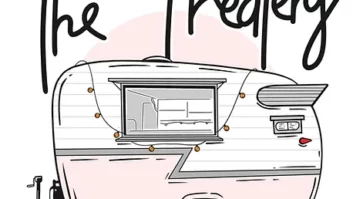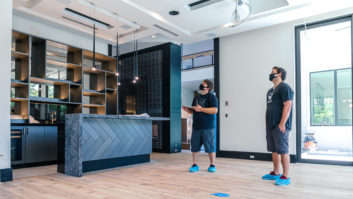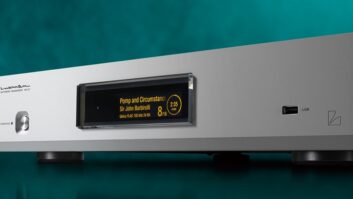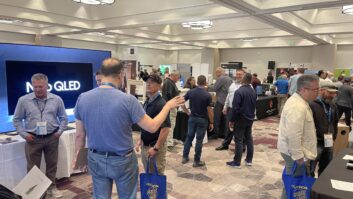A devasting fire at a major chip manufacturing plant in Japan. A giant container ship blocking the Suez Canal for six days. A global pandemic that kept workers from emptying ships in ports around the world.
Though supply chain experts warned against failures for years, no one could have predicted the series of events that led to the Great Supply Chain Crisis that the world is still recovering from. For the custom integration industry, the worst of it is behind us, and so it is a good time to reflect on what happened and what can be done to try and keep it from happening again.
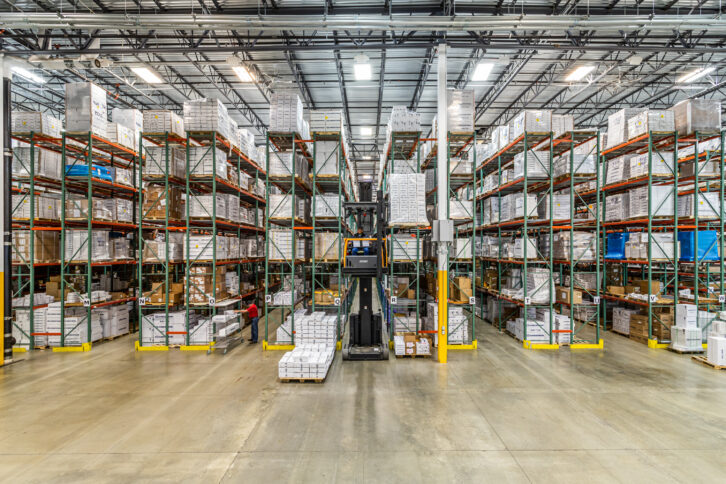
While many companies were affected by supply chain issues, in the residential and commercial integration industries, Crestron’s troubles seemed to garner the most attention, which makes sense as the manufacturer is a huge supplier of equipment to both residential and commercial integrators, increasing the number of projects impacted, as well as the number of professionals affected who have access to social media, message boards, and forums.
Crestron also drew the spotlight upon themselves by communicating openly with their dealers about the situation — even hosting a town hall on the subject and inviting members of the press.
“In an effort to be a good partner — and to be transparent — we talked about the challenges we faced, and we enlisted our customers and our dealers in coming together to navigate through this crisis,” says Brad Hintze, executive vice president of marketing, Crestron. “That kind of transparency and trying to focus on partnership really put us out there.”
Crestron now expects to be fully caught up by the end of 2023, so we talked to the company and two of its dealers about how they got through it — and what they’ve done to protect their businesses against future supply chain issues.
Trouble Brewing
In the beginning, throughout 2020, Crestron was doing well with inventory, but as the pandemic dragged on — and the more customer demand increased — the strain began to show. The commercial side, which ground to a halt for months during the pandemic shutdowns, then reopened and ramped up very quickly, put additional pressure on the company’s overall supply chain difficulties.
“The commercial side changed really rapidly in late 2021,” says Hintze. “It was early ’22 when we started to feel it across the board in both divisions.”
It took some time for Crestron dealer Simplicity KC in Overland Park, Kans., to feel the supply chain’s impact, mainly due to how its business is built. “The majority of how we are set up is for long-term projects,” says owner Joe Acree. “I think we already had a built-in cushion from the way we work because most of our business is brand-new homes. So, while some of the lead time got a little sticky, it didn’t kill us because we don’t have a lot of short-term projects.”
Ryan Lipkovicius, owner of Audio Impact in San Diego, Calif., noticed a few things being on backorder, then more and more. “We have a close relationship with our Crestron rep,” he says. “And it was communicated that certain things are starting to go on backorder or are having a problem sourcing microprocessors or other pieces. That helped us because we had to carry that information forward to our clients to help manage their expectations, which they were quite understanding.”
“Crestron was pretty honest,” adds Acree. “They said, ‘Hey, we don’t know what this is going to look like, so you might want to get in a couple of orders early.’ Of course, they’re salespeople and they’ve got to sell, but if you trust the group you’re with — and we do — a lot of what they said helped. We found it to be in our best interest to be open about when we needed this gear and what was most important to us. To their credit, Crestron worked back with the same amount of effort.”
“What I’ve always enjoyed most about Crestron is the honesty, the straightforwardness, and the uprightness,” says Lipkovicius. “Communication is everything in life for me. Crestron was very clear about the issues that they were starting to have, and they tried to give solutions or alternative products if it they were available.”
Related: Sharing John Clancy
In addition to communicating directly with their dealers, Crestron was also communicating publicly in an effort to take some of the heat off their partners. “It was really important for us to make public statements, even though it was difficult,” says Hintze. “Updating dealers and partners during this time period was like trying to hit a moving target; there were times that we would provide an update and then something would shift underneath us that would impact what we had just said. Crestron has always prioritized the customer, and being forthcoming about the state of the supply chain helped provide cover for our dealers as they were speaking to their end customers.
“If a dealer can’t deliver and a customer’s really upset, and we put them in that position… If we make a public statement and we say, ‘These are the facts,’ then the customer can see it from an external source. It takes pressure off that relationship between the dealer and the customer.”
Working Through It
Once in the thick of the crisis, dealers had to find their own way through it. For Simplicity KC, placing orders early for their long-term projects helped, as did making connections with other dealers, which, in some cases, Crestron helped facilitate.
“We worked with other dealers,” says Acree. “I had buddies around the country and would get parts from them, or I’d call up Crestron and they would call other dealers for us. That’s how we handled it when things started to get tight.”
Like many dealers, both Acree and Lipkovicius started carrying additional inventory — and neither were overjoyed about it.
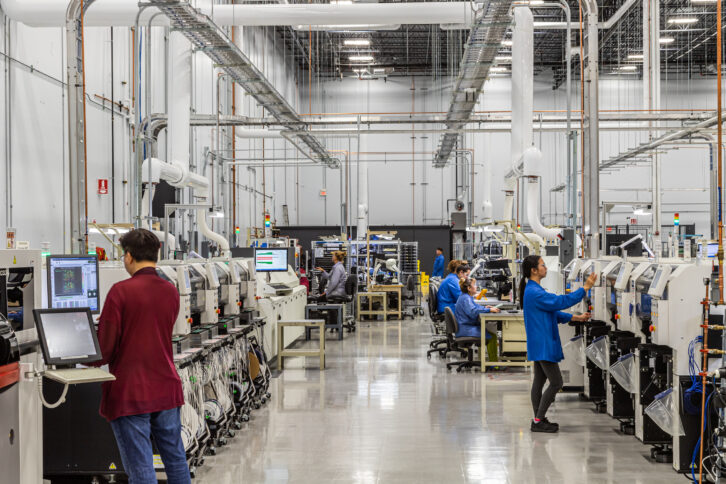
“For a guy like me who’s used to just-in-time inventory, it was really painful to carry inventory,” says Acree. “I think we probably would not have survived without having a good bank to work with. We had to lay out a lot more money and our books did not look great. It was an accounting nightmare, and I had to hire somebody dedicated to handling that monster.”
“We put a lot of our working capital into the business — no loans,” says Lipkovicius. “We purchased a lot of inventory from all the manufacturers we carry to the point where people in our administration office had to walk sideways down the hallways, because first we filled our warehouse and then I put stuff in people’s offices, as well as in the hallway.
“We strategized on the mission-critical components — routers, network switches, Wi-Fi — and then moved on to the other components that are also critical but that will be coming from new work or existing projects, like processors and amplifiers — those sorts of things. We didn’t put inventory into televisions, but we purchased inventory on the backbone products, including equipment racks, cabling, and speaker wire. We basically hunkered down for a good year and a half with the inventory.”
Product hopping was not an option for many of the products that Crestron provides because, as Acree explains, “It’s critical for us to support our clients, and all our technicians would have to be trained on that new product and be able to dispatch on a Saturday afternoon if somebody was down. It’s not just buying the product and getting it in — it’s the cost of the labor to train the staff, and that’s where it gets progressively more expensive.”
Lessons Learned
Though some areas of the supply chain crisis resolved themselves — for example, port staffs got back to work unloading ships that were now free to sail through an unencumbered Suez Canal — Crestron implemented new strategies to quicken the recovery and prevent a repeat from occurring.
“There’re a lot of different things that we did to get us back on track,” says Hintze. “We invested in additional test capacity and brought on new contract manufacturers that enabled us to produce a higher throughput. A number of products were redesigned to use different components. We also established direct buying relationships with some component manufacturers versus going through distribution, and this allowed us greater priority then and into the future.
“During the pandemic, the demand on the dealer was increasing, so we had to take a deep look at reconciling true demand with speculative or anticipatory demand. One of the ways we sought to tackle that was by sorting through those orders and getting a better understanding of when the dealer actually needed the gear. We continue to develop more sophistication into our order processing and demand planning to contemplate that kind of a world — where we’re building to actual demand rather than building to build inventory.”
That greater insight into inventory management and planning is happening on the dealer side, too. “During the crisis, we had to build out an inventory management system that Audio Impact never really needed before,” says Lipkovicius. “We looked at various digital solutions, but none of them met our specific needs. As a result, we built out our own proprietary process driven by Google Sheets, along with various filters and tags.
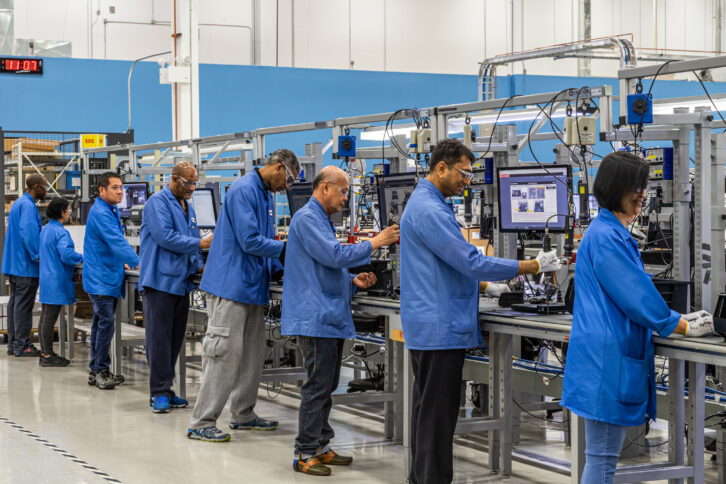
“We are still using them. My brother and business partner Dean developed those sheets, and he keeps improving and evolving them as needed. Now, multiple users across our company have different rights and privileges within the spreadsheets. Each department has custom filter views providing them with the relevant information they need on a project level.
“The spreadsheet has evolved into an inventory ecosystem. We use it for placing orders all the way to receiving the product and noting what room it goes in on-site. We can see right away what we have and what we need to order. And when we order, we’re able to also put in the lead time or the confirmation number or tracking number. It’s helped tremendously.”
“We have a partner in Crestron, and we meet with our rep once a month and he does a job-project forecast,” says Acree. “That used to be like, ‘Oh, the Crestron guy is trying to find when his money’s going to come in,’ but in all honesty, there’s a lot of sincerity to what they’re doing and helping us out. It is more about forecasting now and escalating before it’s too late.”
“We shifted our sales team so that part of their role is to sit down with dealers and do a demand cleaning on a monthly basis,” says Hintze. “That’s something that our channel has never had to contemplate before, and it’s a good business practice for dealers. Let’s look at your pipeline and let’s plan this ahead so that you can be successful. The dealers that have come out the other side of this crisis in a great position are the ones that embraced that idea and worked with us.
Related: Revisiting Managing Inventory and Vendor Partnerships in Times of Uncertainty
“We also invested in new tools to communicate more clearly. We launched our Pro Portal, and it gave dealers the ability to see their orders and when they are about to ship. They can also look up any SKU and see the estimated ship time.”
Good For Business?
Although they probably would not have said it during the peak of the crisis and pandemic, looking back on all that has happened over the past three years Hintze, Acree, and Lipkovicius are all in agreement that it was good for the industry.
“The past three years are the best thing that ever happened to us,” says Acree. “Sometimes the most painful things are the best lessons to learn. We had to learn how to do it leaner and quicker. It sounds weird, but it probably saved our business by having it go through those struggles to make us better at what we do in the long run.”
“The customers value us more and they value their systems more now,” adds Lipkovicius. “In their eyes, they’re not these things they can throw away and replace easily. The workmanship, the equipment, the remote access, the support — they all have more value now.”
“We’re fortunate because there’s no shortage of people who want and need the solutions we provide, and that was reinforced so heavily through the pandemic and then beyond,” concludes Hintze. “We’re lucky that we get to be here and deliver solutions for customers. We now have a deeper conviction around the products and the technologies that we build today that families and dealers are going to need for the long-term. This is a very durable business opportunity, and where there is so much real, long-term demand, it can only go up from here with the right investment and the right focus.”

